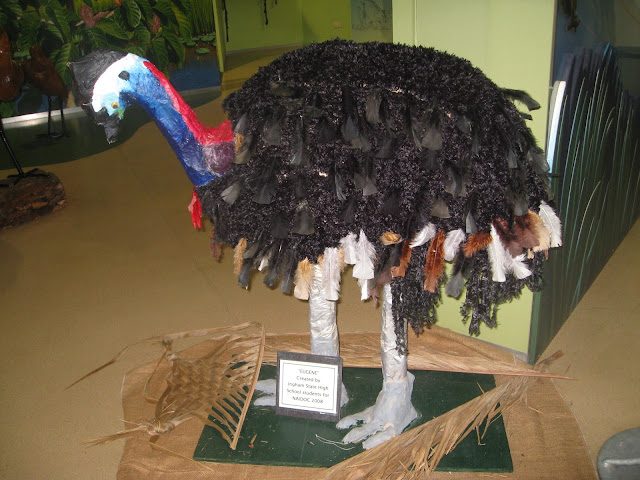As I returned to the highway, heading for Ingham, I still hoped, however remote the chance, that we might still get fortunate enough to see and photograph a Cassowary. When we reached Ingham, looking for an ATM, I knew my cassowary photographs were not to be. We registered at the Palm Tree Caravan Park just south of town and I quizzed the friendly owner on the conditions at Tyto Wetlands. She told me I was in luck. The surrounding areas had received little rain and the Ingham area was the only place with moisture. When that happens in Australia, birds flock to the water. Tyto should be excellent for birds. That buoyed me up after drawing a blank on my Cassowary. This trip has produced far fewer waterbirds than I had expected and very few shorebirds so Tyto might be the antidote. Within minutes we were driving into the Tyto Wetlands parking lot.
Tyto Wetlands is a nearly 300 acre natural wetland named after the rare Eastern Grass Owl (
Tyto capensis) which can be found here. The visitor center had a very friendly volunteer staff and after finding out we were from Michigan became very chatty. They urged us to see their exhibits before venturing onto the trails. The very first exhibit I saw was a Cassowary-or what was suppose to be a Cassowary. Nothing like rubbing salt in the wounds!
The second exhibit didn't make me feel any better. Do we birders really look like that?
I decided I had seen enough, thanked the staff for their kindness, and drove to the second lot to access the trails. There is no driving here so I shouldered my equipment and headed out. This would be a long afternoon and tough on the back, but I was told the birds were out there. As Edie and I walked down the main access trail, I remarked that a lot of the low areas were very dry here and that with rain there would be many more birds in them. We soon found the deeper lagoons and the birds were concentrated here although fewer in number than I was led to believe. A flock of Australian Pelicans was actively feeding in the distance, but I had already photographed them. Several herons were much closer and turned out to be two species that I did not have good shots of yet.
 |
| White-necked Heron |
 |
| White-faced Heron |
Within minutes, several Royal Spoonbills flew by.
 |
Royal Spoonbills
They will never compare to our Roseate Spoonbills in color but they are very impressive and interesting to compare with ours. |
 |
| Royal Spoonbill |
When it became apparent that I had exhausted the possibility of any new waterbirds, I began to explore the drier trails and met with some success.
 |
| Red-backed Fairy-Wren |
 |
| White-gaped Honeyeater |
 |
| Varied Triller |
 |
| Crimson Finch |
On the way back we stopped to watch a mob (I was told mob, herd, or troop is the correct term) of kangaroos. When we arrived at camp the loud cacophony from the trees as birds went to roost caused me to grab my camera again, but all I captured was an amorous pair of Peaceful Doves revealing their chestnut under wing linings.











No comments:
Post a Comment